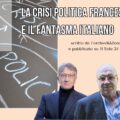The ambitions of Australia’s foreign policy converge on harmony between history and geography. This is the meaning of Canberra’s oscillations that will not bend even if the executives succeed. The preceding labor cabinet needed to face the same obstacles as the liberal party that won the elections. Prime Minister, Tony Abbott’s, recent visit to northeast Asia confirms these fundamental dilemmas. His country belongs to the European and British tradition of culture, history, business ethics, and political system. It owes its nearly 20-year economic expansion, however, to its geographic proximity to Asia. The recession is relatively unknown in the Antipodes; unemployment and inflation are under control, and their accounts are in order. Among the many causes, one prevails and summarizes the others: Australia inserted itself into the growth cycle in Asia, right at the time when industrialized countries were suffering from stagnation or recession. The top four destinations of Australian exports are in Asia: China, Japan, South Korea, and India. The first is also the principle destination of Australian goods, confirming the first place spot robbed from Japan in 2007. Furthermore, Investments in the mining sector are conspicuous, especially those from Beijing. Gold, iron, copper, and potassium are indispensible to China’s transformation. Manufacturing’s incessant demands are converted into acquisitions and investments. The former are passed through a sieve by the Foreign Investment Review Board (the FIRB), which provides evaluations to the government to understand if investments respect local interests and if they’re capable of creating profits and employment. Especially for China, Australia represents more of a ground for negotiation rather than conquest. It’s actually the negotiation aspect that has dominated the prime minister’s agenda during his recent trip to Tokyo, Seoul, and Beijing. With great fanfare, he advocated the theme songs of three free trade agreements (FTAs) with each of the capitals. In reality, only the agreement with South Korea was signed, while the other remain entrenched in a myriad of apparently irresolvable technical details. Optimism prevails, but the difficulty of opening structurally different markets is not hidden. Differences among social systems also remain, only affected by commercial conveniences. And so, like many countries in Southeast Asia, Australia owes its current situation to China, but its security to the United States. Australia fears China’s expansion, and didn’t hesitate to take Tokyo’s side over the contested islands in the Pacific. It’s obviously aligned with Washington DC in the principal international issues, and it’s “western” faith has never been called into questions. In any case, the need to maintain a stable report with China is essential. The flows of goods are unstoppable; the differences take the form of conciliation during negotiations, while a wise use of immigration attracts Chinese talent. Despite the stickiness of the movements, geography has prevailed, or at least it’s the nerve center for the country’s future. In reality, the government needs to reconcile two more cogent subjects: politics and the economy, identity with respect to globalization that doesn’t discolor it significance. The former guide it to London and Washington DC, the latter toward Asia, with a a mandatory stop in Beijing.
Share
















